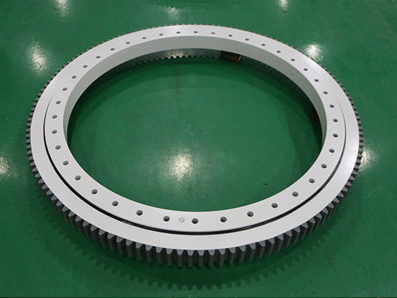The raceway of the slewing bearing generally needs to be heat treated. In the heat treatment process, because the diameter of the raceway circle of the slewing bearing is relatively large, flame surface quenching is usually used. The method is to use acetylene to heat the surface of the workpiece to be hardened and then add water to cool it. , this process is completed continuously.
1. How is the slewing bearing soft belt produced?
During the production and processing of the slewing bearing, the raceway of the device generally needs to be heat treated. The usual processes are: forging → rough machining → quenching and tempering treatment → finishing → raceway surface flame surface quenching → raceway surface grinding and other processes . One of the raceway surfaces is flame quenched to form a soft band.
The so-called soft belt is the area that has not been heat treated. The formation of the soft band is necessary for the heat treatment process. In the heat treatment process of the slewing bearing, because the diameter of the raceway circle of the slewing bearing is relatively large, flame surface quenching is usually used. The method is to use acetylene to heat the surface of the workpiece to be hardened and then add water to cool it.

The heated flame spray gun and water gun are mounted together while making a circular motion along the circle of the workpiece. When the movement is close to 360 degrees, the heating and water spray are stopped immediately. That is, the circular areas of heating and water spray do not overlap. Cracks in the workpiece can occur if the circle areas where the heating and water spray occur overlap (heat treatment at an angle greater than 360 degrees on the circle). The tangential width of the unheated area is typically 15 mm. This 15 mm area is called the soft belt in the slewing bearing, that is, the so-called soft belt is the area without heat treatment. The formation of the soft band is essential to the heat treatment process.
Under normal circumstances, the steel character “S” is marked on the position where the soft belt exists in the workpiece to indicate the specific soft belt position. The installation position of the soft belt is essentially to improve the life of the bearing. From the perspective of the user and the manufacturer, it is still a reasonable position to install the upper and lower ring soft belts of the slewing bearing. Therefore, the manufacturer of the slewing bearing should accurately mark the position of the soft belt of the slewing bearing, and the manufacturer and installer should reasonably install the position of the soft belt of the slewing bearing as needed.


